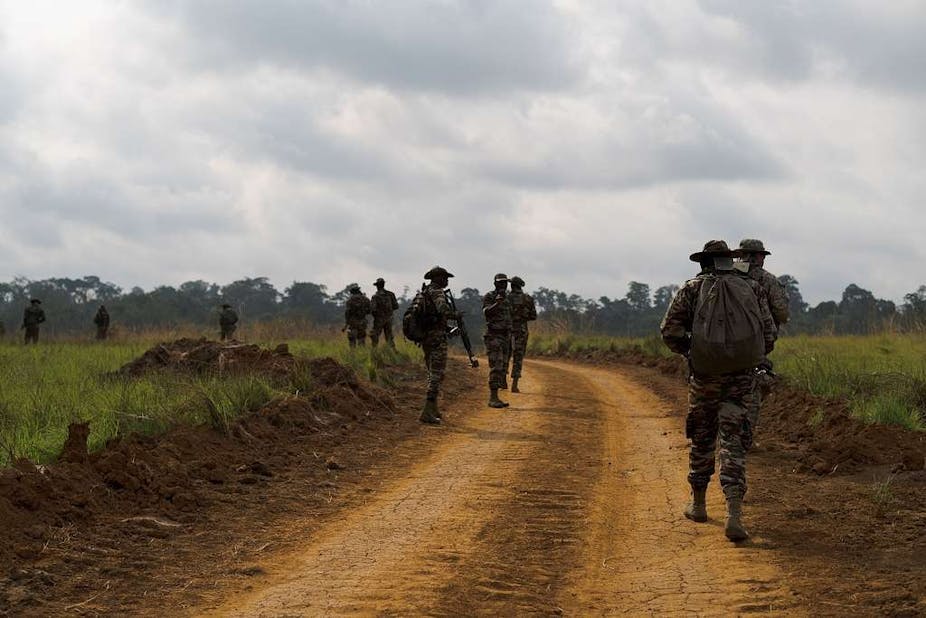The armed conflict in Cameroon between separatist groups and the military is in its sixth year. Armed groups are fighting for secession of the English-speaking north-west and south-west regions and establishment of the Republic of Ambazonia. The government rejected a Canadian peace initiative in January 2023.
Cameroon is officially bilingual. However, the minority English-speaking population has complained for decades of unfair treatment by the francophone-dominated state. Periods of opposition and resistance have come and gone, for instance in the 1990s. But the current levels of violence are unprecedented.
The impact on the civilian population has been devastating. In almost six years of conflict, over 6,000 civilians have been killed. Hundreds of villages have been razed in the military’s counterinsurgency campaign. Hundreds of thousands have fled the violence. Recent figures indicate 628,000 internally displaced people and 87,000 Cameroonian refugees in Nigeria, out of a total population of some four million in the anglophone regions.
Drawing from our personal experiences and research on the conflict since 2017, we assessed the current situation and the prospects for resolution based on citizen feedback. Most citizens propose inclusive dialogue and a referendum.
Current impasse in peace efforts
A number of factors currently sustain the conflict and make peacemaking difficult.
The foremost obstacle is the Cameroon government’s desire to crush the separatists and achieve a military victory. While government forces are better equipped and more numerous, this is a guerrilla war fought in difficult terrain. Such wars are difficult to win. This is especially so when fighting mobile armed groups fuelled by decades of grievances. The grievances relate to policies of forceful political, social and cultural assimilation, economic deprivation and marginalisation.
Additionally, a war economy has developed. Military personnel, political leaders and some Ambazonian groups are all profiting from the conflict.
On the Ambazonian side, other factors also go against peacemaking. Notably, the Ambazonian movement has become increasingly fragmented politically and militarily. The political leadership, based mainly in the diaspora, has long been split between the Ambazonian Governing Council and the Interim Government. The Interim Government is now fragmented further under competing leaders.
The apparent disconnect between the political leadership living securely in the diaspora and the longstanding suffering of the civilian population in the conflict zones is another factor that militates against peace talks.
Militarily, there is a proliferation of armed groups. This makes any ceasefire prospects more difficult.
While atrocities against civilians are undoubtedly committed by both warring sides, the military in particular continues to exercise extreme violence against the civilian population. Arbitrary arrests and detentions are rampant.
All this has led to a palpable shift in the mood among local civilians, with war-weariness and a strong desire for conflict resolution.
Way forward
Among our research participants from Ground Zero – the local name given to the conflict zones – an almost unanimous desire was expressed for an end to the violence through a political settlement. Perhaps it is time to listen to these voices from Ground Zero for their perspectives on how to resolve the conflict.
One research participant succinctly summed up a possible pathway:
Ceasefire is the first button that should be clicked … [and] all the political detainees should be released. After their release, dialogue and a referendum and the people will decide.
The call for “inclusive dialogue” was the most commonly voiced element of this peace strategy. As one respondent noted: “real, genuine, inclusive national dialogue”, inclusive of diaspora elements and their own grassroots voices.
While we found support for both secession and a two-state federation among our participants, there was consensus on a referendum among the English-speaking population as their preferred means of political decision-making.
Although research participants favoured a bottom-up approach that facilitated local participation in peace processes, a mediation role for the international community was perceived as important:
If there is no foreign intervention, it will be difficult.
The UN and African Union were most frequently mentioned. At the time of our study, the Canadian initiative was unknown.
However, the warring parties remain entrenched in their unwillingness to countenance a political solution that either challenges the status quo (government side) or does not entail independence (Ambazonian side).
While most separatist factions (though not all) have shown more willingness to commit to the Canadian peace process, all of them should now listen to the views of anglophone civilians that they purport to represent and respect their desire for a peace agreement.


